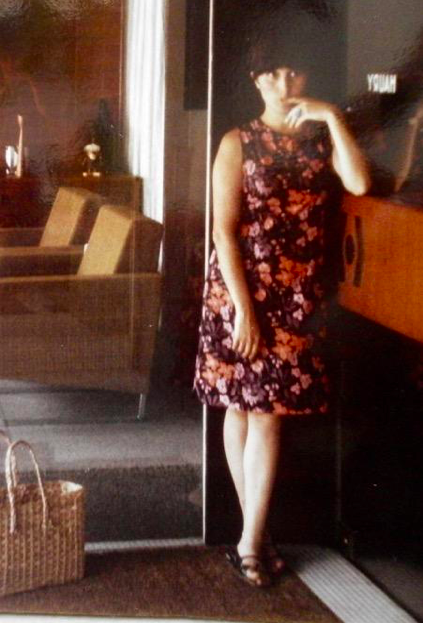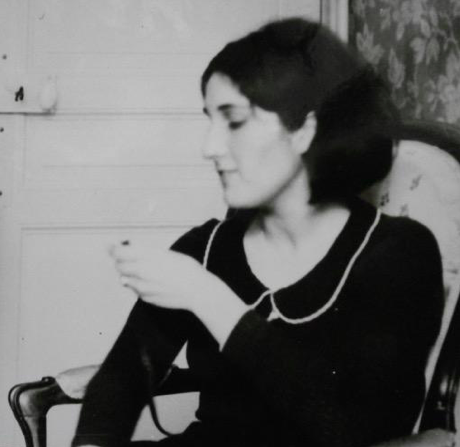Oral History and Dress History: Monique Naudeix in 1960s Paris
Alexis Romano’s doctoral research studied the development of the French ready-made clothing industry between 1945 and 1968 and asked how it connected to the history of post-war France, and to conceptions of national and gender identities, through the cross-analysis of imagery, archival materials, and oral histories. This short essay illustrates this method, in its presentation of a chapter section that relates magazine imagery to the testimony of one woman interviewed, Monique Naudeix, who was born in 1941 and grew up in a working-class area in Paris. This and the author’s other interviews explored embodied, narrative aspects of dress, complicating the dissertation’s study of representations in images as a means to discern shifting conceptions of fashion, modernity, and feminine identity over the course of the examined period. They specifically informed the aim of the final chapter to create a dialogue about the meanings of dress, and the material and visual culture of its experience during the 1960s.
Like many other French women of her generation, as a child Monique Naudeix predominantly wore home-sewn dress, but matured in a society where she worked (as a biology teacher) and bought her own clothing. Increasingly into the 1960s she partook in the culture around stylisme, which the author’s research defined as designer-led small-scale ready-made production. Alongside the continual expansion of the ready-made clothing industry, women’s national position was indeterminate and peripheral, situated as they were at the end of a twenty-year period that saw no legislation for women’s rights (between suffrage in 1945 and the amendment of the marriage law in 1965). Imagery in the fashion press and distribution in boutiques foregrounded this new clothing culture, and symbolized the potential for women to shape their selves and lifestyles during a time in which their autonomy and agency hung in the balance.
In the interview, Naudeix discussed how she avidly collected garments as well as magazines, including Elle, Vogue and especially Jardin des Modes. She appreciated these publications as beautiful, creative, and trendy objects, but also employed them to relate to the outside world: she admitted that “I started from an image, and [if] I liked the image I tried to copy [it].” [1] The magazines therefore provided her with an idea of how she aspired to fashion herself through home-sewing and, later, shopping. This translated into a range of garments including jeans, jersey dresses and other knitwear, Chanel-style suits, and patterned minidresses, such as a “Bon Magique” Elle dress, which she saw directly pictured in the magazine and then purchased from the Elle boutique. These examples highlight her creative agency with respect to ready-to-wear, as well as illustrate how some fashion consumers located themselves in relation to a broad range of magazine imagery, indicating its potent unifying effect on women.
This included frequent articles that pictured jersey and other fashionable knitted textiles throughout the decade.[2] One designer in particular, Sonia Rykiel, who featured among the few named ready-to-wear creators during the early 1960s, stretched the creative potential of knitwear designing. For instance, her cream-colored double knit wool jacket with vertical ribbing and a shoulder detail from circa 1965 retained the suppleness of a sweater. Often citing jersey, other consumers interviewed unanimously favored soft clothing that allowed for freedom of movement. Contemporary promotional language highlighted the fabric’s sensuality. A 1963 Vogue article, for example, likened jersey to a chameleon in that it “adapts itself, changes its “skin”, look, texture [and] feel.” [3] Jersey was unique in that it could be fluidly draped, yet, as Monique explained, envelop the body. This was how she described her first Sonia Rykiel purchase, a navy trapeze-line maternity dress in jersey from the boutique Laura. Although, as she discussed, “the boutique was ugly,” “it had what I wanted, the dress I wanted.” [4] Thinking back, she added, “I don’t even know if I wanted it, but […] I tried it.” [5] Thus the feel of Rykiel’s garments, which “hugged the body, so [we] seemed so thin inside them,” appealed to Monique’s self-fashioning.[6] Their elasticity, moreover, can be likened to the fabrication of her modern identity, which fluctuated in relation to images of others.
As Naudeix became an adult, she was faced with a new culture of clothing and imagery. Joanne Entwistle has written that “modernity opened up new possibilities for the creation of identity: it unfixed individuals from traditional communities, placing them in the melting-pot’ of the city, and it extended the commodities available for purchase to an ever widening circle of people, thereby providing the necessary ‘raw material’ for the creation of new identities.”[7] In order for Monique to experience wider currents of modernity, or feel she existed, she found it necessary to undergo a sartorial renewal. She recounted that she often changed her garments and her appearance, whether by shopping or reworking her old clothing. This often led her to copy images and looks, mainly from what she saw in magazines, as noted above.
For me, it was the… firstly the novelty… every time that I wanted [something] new and I found that a person had… well, adapted a garment to her personal allure… That’s something that fascinated me and I think that I wasn’t able to find that for myself. It’s that people seemed to… and they had maybe done it without trying? And that’s what I was sorry to not have been able to do. […] and the first time that I tried on the Dorothée Bis pullover, with the pretty little crochets, well I found that that one really worked for me… that it was just what I needed, that little short sweater with trousers.[8]
Thus Naudeix used dress to search for, fabricate and unify her fragmented sense of self, which was largely measured against images of others. She sought to bridge the connection between inner self and appearance through fashion, and she felt that with a brown crocheted pullover she purchased from the fashionable boutique Dorothée Bis, she succeeded in performing her identity.
She rarely found a woven garment that she felt properly fit her body, and appreciated that she never had to rework a purchased knitted one. Naudeix also spoke at length about her prized knitted mohair sweaters by Sonia Rykiel, so expensive that she could only afford one per year. A family photograph documented her first, which she bought after her maternity dress. Plum-colored with a rounded collar trimmed in white, it epitomized the way that Rykiel’s garments “hugged the body.” The photograph captured an intimate moment in which Naudeix displayed a heightened awareness of her body and her delicately knitted garment, as she studied and fingered the strap of her sweater. Her descriptions of other similar knitted garments laid focus on her physical experience in them, including sweater jackets that she wore “long and close to the body,” over thin wool pullovers with wide-leg trousers in jersey.[9]
The poses of the models in an editorial in the July 1966 issue of Vogue likewise highlighted the ways in which knitted fabric draped against their skin, and how it hugged and contained their bodies. The article’s title, “Toile de Ville,” which translates both as “city backdrop” or “city fabric,” also implied that the urban setting was a malleable woven textile. As opposed to the title’s urban nod however, Helmut Newton photographed models in the studio, set against stark white or black backgrounds, embellished only by dramatic lighting. In effect, the disparate sizes of the models that occupied the same photograph, coupled with shadow and syncopated movement, gave the impression that they inhabited an alternate, hyperreal universe. Models, dressed in jersey garments by designers Daniel Hechter and Jean Risoli, explored the feel of their elastic clothing as they walked in endless space, which resulted in the discrepancy between contained body and expanse. Clothing that enveloped the body balanced the women who, in ways that evoked Monique’s self perception in uncertain, modern times, could not locate themselves in a fixed place and experienced a fragmented sense of self.
Over the course of the interview it became clear that Naudeix used her cherished magazines and garments to describe herself and relate to others throughout her life. She felt a strong attachment to them and found it difficult to throw anything away, including one Sonia Rykiel dress, which, she explained, “my daughter wore afterwards, twenty years after. She still has it. She changed the lining, but she has it still.”[10] Transcending historical boundaries, the dress thus shifted meaning to represent the materiality of her filial bond, allowing her to discuss her daughter, who she described as beautiful and intelligent. Like her mother, she was a maker who altered her clothing to her express herself creatively, one component of her own multilayered identity.
Notes
[1] Author interview with Monique Naudeix, Paris, 1 December 2014, Appendix 6, “Prêt-à-Porter, Paris and the Image of Women, 1945-1968” (PhD Dissertation, Courtauld Institute of Art, 2016). Author’s translation: “Je partais d’une image, et l’image me plaisait, j’essayais de copier.”
[2] See, for example, “Dans l’actualité: le jersey,” Vogue, February 1963, n.p. “En Petite Robe du Matin au Soir,” Jardin des Modes, February 1965, 62; “Pour l’explosion Jersey!” Jardin des Modes, March 1966, 130.
[3] “Special Jersey,” Vogue, August 1963, n.p. Author’s translation: “Jersey-Caméléon: le jersey s’adapte, change de ‘peau’, d’aspect, de grain, de toucher, de relief.”
[4] Author interview with Naudeix. Author’s translation: “[…] la boutique était moche en plus. Mais il y avait ce que je voulais, la robe que je voulais.”
[5] Ibid. Author’s translation: “Je sais même pas si je la voulais [mais] c’est que je l’ai essayé.”
[6] Ibid. Author’s translation: “[…] qui moulaient le corps, du coup on avait l’air tout mince là dedans.”
[7] Joanne Entwistle, The Fashioned Body: Fashion, Dress and Modern Social Theory (Cambridge: Polity, 2000), 117.
[8] Author interview with Naudeix. Author’s translation: “Moi c’est le… la nouveauté déjà… chaque fois je veux du nouveau et je trouvait que la personne avait… était… avait bien adapté son vêtement à son allure. Ça s’est quelque chose qui me fascinait et je pense que j’arrivais pas à le trouver pour moi… c’est que les gens avaient l’air de… ils avaient peut-être fait sans essayage? Avant. Et c’est ça que je regrettais de pas pouvoir faire. […] et la première fois que j’ai essayé le pull Dorothée Bis là, avec des jolis petits crochets là, et bah celui-là j’ai trouvé vraiment qu’il m’allait. Que c’était ça qui me fallait, le petit pull court avec le pantalon.”
[9] Monique Naudeix, email message to author, 11 February 2015. Author’s translation: “[…] longues et près du corps.”
[10] Author interview with Naudeix. Author’s translation: “[…] ma fille l’a porté après, vingt ans après. Elle l’a encore. Elle a changé la doublure, mais elle l’a toujours.”




